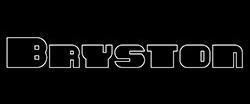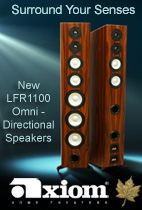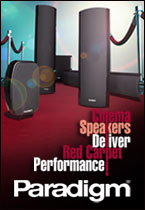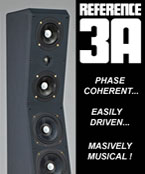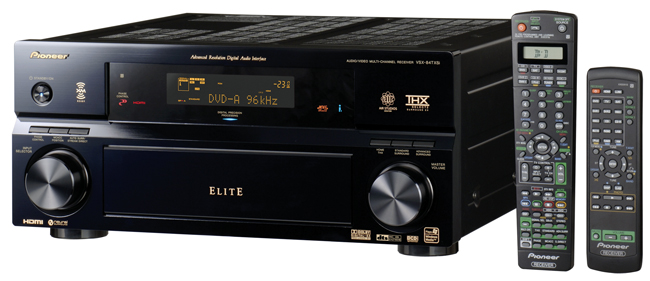
A/V receivers are advancing at the speed of light which makes all of us home theatre enthusiasts well… enthusiastic! After all, an A/V receiver is arguably the most important component of a home theatre because all other equipment is connected to it. Every new generation of receivers offers improved performance and features that we could only dream of just a couple of years ago. The Pioneer Elite VSX-84TXSi A/V receiver is the flagship model in the company’s line-up and offers features that reach far beyond its $1799 price tag. The VSX-84TXSi offers an ample amount of power, lots of flexibility and a long list of very impressive features. It also has a ridiculously long model number, so I’ll refer to it as the “84″ from here on. Of course the important question is, how does the 84 perform?
Let’s start from the top. The 84 delivers 140 Watts of power to each of its seven channels, decodes all of the latest surround formats and carries THX Select2 certification. Its attractive feature list includes: an advanced acoustic calibration, a USB PC port for the highest music quality playback from a computer, a compressed music enhancer, a Faroudja DCDi HD video scaler and i.LINK advanced resolution digital audio interfaces. In addition, it also contains dedicated iPod and XM radio inputs.
But it doesn’t stop here. The 84 offers the fullest suite of inputs that I have seen in a receiver yet. The most significant are its four HDMI (version 1.2) inputs and two i.LINK inputs. The i.LINK inputs allow jitter-free transmission of audio (including DVD-Audio and SACD) between i.LINK equipped disc players and the receiver. Additional video inputs include: 3 component, 5 S-Video and 7 composite. On the audio side, the 84 offers: 7 digital audio inputs (5 optical and 2 coaxial) as well as 7.1 analogue audio inputs for connecting DVD-Audio and SACD players. A phono input for turntables is also provided for you vinyl junkies out there. The combined number of inputs gives the 84 the flexibility that every modern receiver should have. In my home theatre, a lack of inputs on the receiver has always been a battle.
Two remotes are included in the box for multi-room operation. As most modern receiver remotes, the main remote has an LCD screen and what would appear to be a hundred buttons - I didn’t exactly want to count them. Direct input buttons are provided for the common inputs but the Pioneer has so many inputs that the rest of them have to be switched using a single button. The 84 is capable of playing the same (or different) sources in three rooms at the same time. The main zone and zone 2 are powered and capable of both audio and video. Zone 3 is for digital audio only and requires a separate amplifier.
The 84 is a sexy-looking receiver with a high quality build. All components, from the buttons and dials on the front panel to the speaker posts on the rear have a solid feel. The remotes also have a solid build quality, although unfortunately they are not backlit - something I would expect from a receiver at this price point.
The digital signal processing of the 84 is provided by a Sharc-EX processor from Analog Devices coupled with a 48-bit Freescale processor. Digital to analogue conversion is performed by 192 kHz / 24-bit DACs and analogue to digital conversion is 96 kHz / 24-bit.
Pioneer’s Advanced MCACC (Multi-Channel Acoustic Calibration and Control) made the initial setup of my Sinclair Audio Brighton speakers really simple. I placed the supplied microphone in my listening position, walked out of the listening area and started the process. For the next few minutes, test tones filled the listening space from every speaker and then the system informed me that it was done. During this time, the receiver determined the correct speaker sizes, speaker distances, and adjusted channel levels and delays. Most modern receivers’ automatic calibration systems can perform this as well, but Pioneer’s Advanced MCACC goes the extra mile. It also reduced the standing waves in my room and adjusted the frequency balance of each speaker for a flat response. Pretty impressive, huh? Technical jumble aside, the MCACC calibrated the receiver to produce the best possible sound based on my particular speakers and room characteristics. It produced the best results from an automatic setup that I’ve heard yet. This is a very useful feature considering that most rooms are acoustically imperfect and everyone’s listening room is different. The improvements were very noticeable when compared to my initial listening session after performing a manual speaker setup. Once the automatic calibration is completed, you can fine tune any of the settings manually. For professional installations, the 84 can also be connected to a PC and tweaked even further (to minimize the unwanted effects of room reverberation) using software that can be downloaded from the Pioneer website.
I put the 84 to the test with various audio intensive movies, stereo and multi-channel discs playing through a Pioneer Elite DV-46AV player. Black Hawk Down instantly threw me into some heavy duty surround action. Spinning helicopter blades and bullets transitioned from speaker to speaker smoothly and created a realistic effect of being right there on the battle field. Powerful explosions filled my room without any strain and were often followed by debris falling 360 degrees around me. The 84 had lots of power and it wasn’t shy about showing it. This was war and it truly sounded like war! But the 84 had a softer side to its sound as well. In the movie The Island, it created convincing three-dimensional atmospheres in both the Tranquility Centre and the nightclub scenes. The movie dialogue came through the centre channel with clarity, regardless of whether the background ambiance was soft or loud.
Stereo CDs sounded crisp and were played back with lots of musical details, delivered in a decent-sized soundstage. Multi-channel albums such as Beck’s Sea Change and Nine Inch Nails With Teeth sounded well-balanced and opened up the soundstage substantially. The motion of sound between the channels was smooth. While listening to music, the 84 became completely transparent and pulled me right into the sonic landscape. The tonal balance was great from top to bottom. The dynamics of the 84 were equally impressive. The sound never sounded like it came close to being distorted or strained, even at high volume levels.
A couple of other sources that I tried with the 84 were an iPod nano and a PC. I connected the iPod using a special cable supplied with the receiver. While playing the tunes, I was able to select songs using both the iPod as well as an on-screen display on my television. The 84′s remote control allowed me to conveniently make my selections through the on-screen menu. The television did not have to be on because a simplified version of the on-screen menu was also shown on the receiver’s display. Video and pictures from an iPod can also be displayed on the television when using this supplied iPod cable.
For music playback from a PC, Pioneer has included a USB input on the 84 - a first in any A/V receiver that I’ve seen. Normally in order to play music stored on a PC, a mini-stereo to RCA Y-cable must be used. This method uses the PC’s sound card to convert audio from digital to analogue and then sends the audio using an analogue cable to the receiver. A typical sound card performs poor digital to analogue conversion and analogue cables have the potential to pick up interference. When audio is connected using a USB cable, in the case of the 84, a pure digital signal makes it directly to the receiver. Then the receiver uses its high quality digital to analogue converters to process the audio. I am all too familiar with poor quality audio because my PC has been connected to a receiver for the last several years. Using the USB connection made a substantial difference. First, the noise floor (background noise) was lowered significantly. Secondly, the audio sounded fuller with a greater extension in both frequency extremes.
But the 84 has one more trick up its sleeve for digital music fans. This feature, called Sound Retriever, improves the sound quality of compressed digital audio from a connected PC, iPod or MP3 player. Pioneer claims that this feature restores sound pressure and smoothes jagged artifacts left from sound compression. So did it work? You bet. In fact, it worked very well. All my digital music sounded richer, fuller and much more pleasing to the ears. Both the low and high frequencies were extended and the soundstage became significantly larger. Some of the compression artifacts were smoothed out, however I still heard every one of them. This feature combined with the 84′s USB and iPod inputs should be appreciated by digital music lovers.
As with most modern receivers all composite, S-video and component inputs are sent to the 84′s HDMI output. But the 84 also performs video up-conversion of lower resolution signals to 480p, 720p and 1080i using a Faroudja DCDi video scaler. I connected my older gaming consoles, Xbox and PS2, to test this. Up-converting 480i and 480p signals from both consoles resulted in a sharper but slightly darker picture. The stretching of the 4:3 picture to fit my 16:9 display worked very well. Although I couldn’t decide whether I preferred the 84 up-converting these lower quality signals or simply having my Pioneer plasma stretching the signal (without performing up-conversion). The Pioneer plasma does incredible picture processing, perhaps that’s why. With other television sets, the results of the 84′s up-conversion may produce more noticeable results.
Overall I was very pleased with the Pioneer Elite VSX-84TXSi. It delivered a crisp, clean audio presentation of all the material that I sent its way. There are a number of attractive features that set this receiver apart from other similarly priced products such as Advanced MCACC, four HDMI inputs, a USB PC input and the Sound Retriever. With its overall vast number of inputs this is one of the most flexible A/V receivers currently on the market. At $1799, it is competitively priced and offers many features that similarly priced receivers can only look up to. Not too shabby!
Manufacturer:
Pioneer Electronics
www.pioneerelectronics.ca
905-479-4411
Price:
$1799 (Canadian)
Click here to discuss this article on the CANADA HiFi Forum

